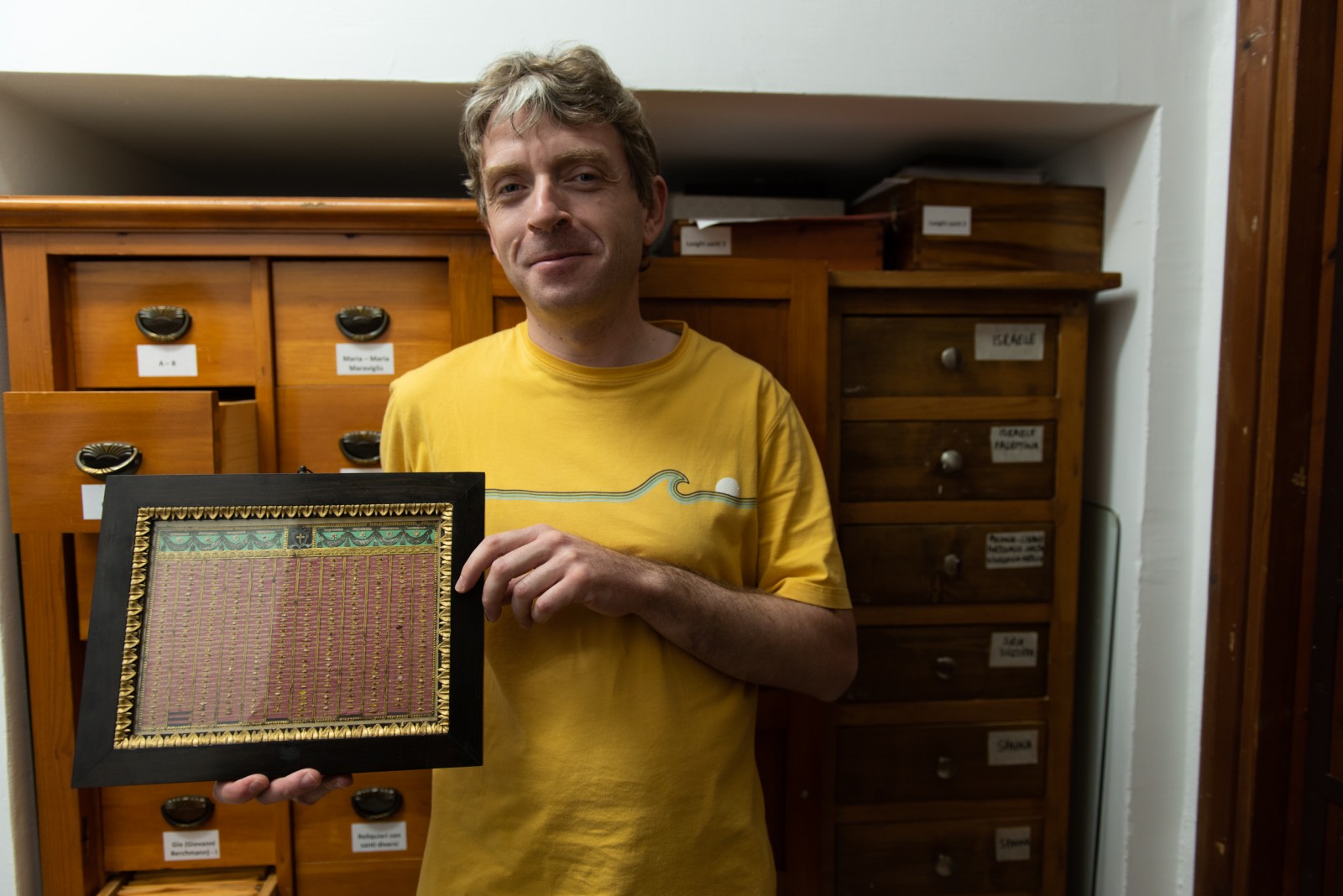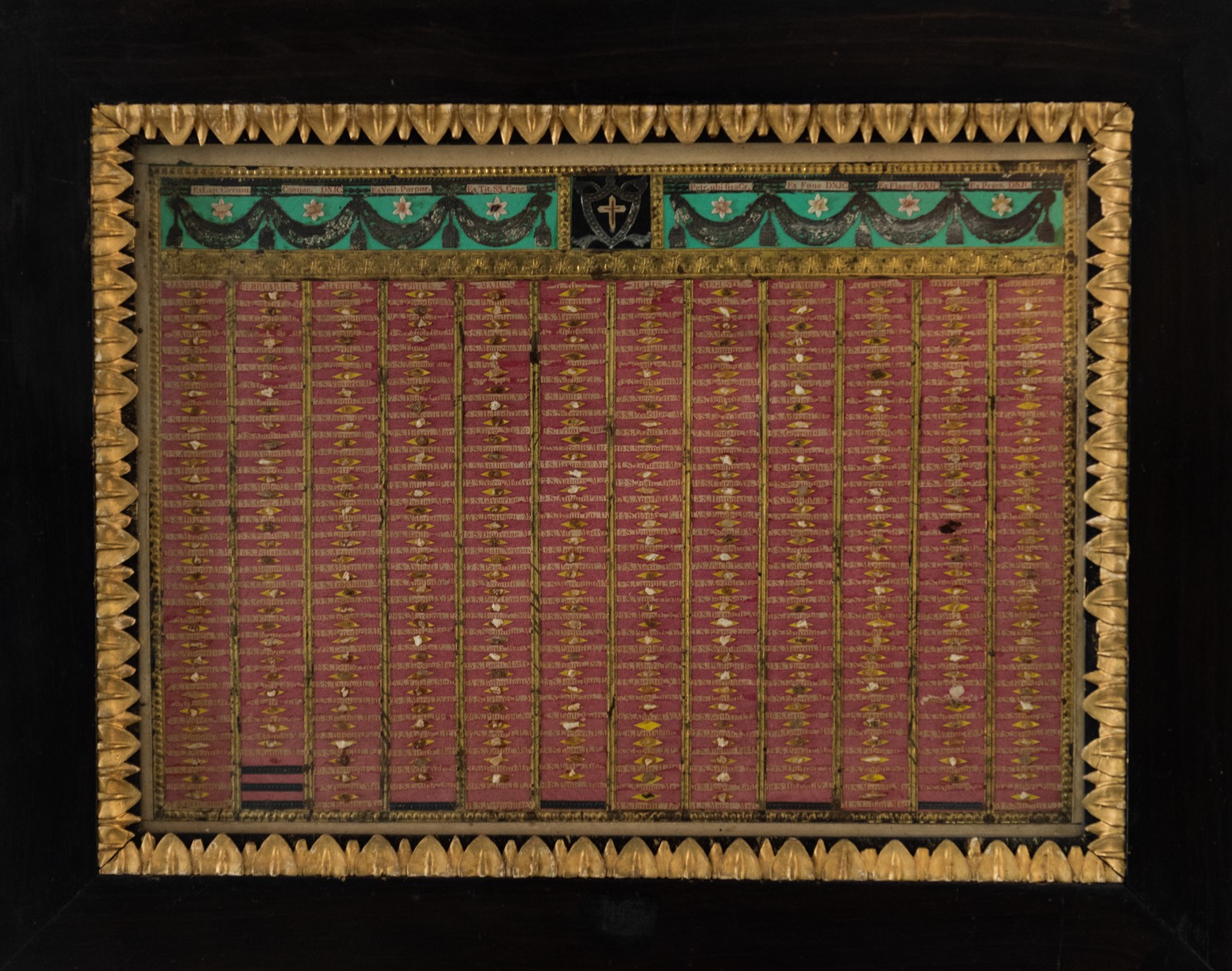When the relics of the Custody of the Holy Land manifest the philosophy of the Terra Sancta Museum
To venerate the relics of saints is to recognize the qualities of the latter, their testimony of faith in the name of Jesus, and their intense desire to imitate Him by imploring God through intercession. Let us go to the discovery of the relics collection of the Custody of the Holy Land.

Guillaume Saint-Didier, a DCC volunteer, arrived at the Custody in March of 2018. “When I discovered the Cultural Heritage Office, I asked how I could be of use and there were stacks of boxes containing relics left behind by Brother Cristoforo Alvi after his departure from the Saint Savior Monastery; I began working on it.” Guillaume did not know it yet, but he had begun meticulous work that would keep him busy for many months. The relics collection of the Custody brings together more than 1300 relics for the Saint Savior Monastery alone!
Concretely, the relics had to be classified in alphabetic order “saint by saint” and photographed to create a file for each reliquary in the Custody database. However, for a number of relics, their provenance remains unknown. “Very few have certificates of authenticity, the oldest certificate going back to 1790. Sometimes, the certificates were separated from the relics, and in the majority of cases they are completely nonexistent. Hence, one must be very cautious, one cannot assume anything. During the Middle Ages, there was relic trafficking. Being trained as an archaeologist, I must work with a critical mindset,” continues Guillaume.
Henceforth, the new relics which arrive at Terra Sancta are documented. Last November, the sisters in charge of Maria Bambina – the home of the Custody volunteers – celebrated their patron saint, Elizabeth of Hungary. On this occasion, thanks to his work on classification and archiving, Guillaume was able to propose that a relic of Saint Elizabeth be displayed at the celebration. “Nobody knew that we had a relic of Saint Elizabeth, this work shed light on the richness of the collection,” says Brother Stéphane Milovitch, Director of the Cultural Heritage Office at Terra Sancta.
Guillaume now shows us an original reliquary containing 365 saints for the 365 days of a year, in accordance with the saints of the old calendar and the solemnities of the Holy Places. “This reliquary is unique to the Custody, there are many fragments of stone from the sanctuaries, there is also the water of Jordan in a vial.” We are going to celebrate the Feast of Pentecost in a few days. “We are celebrating the birth of the Church of Christ which was born here in Jerusalem. After the stoning of Saint Stephen, the first Christians left Jerusalem and other local churches emerged, the Church becoming enriched by a multitude of sister churches. The Church of Jerusalem is therefore local but conserves to this day a universal character,” explains the Franciscan trained in liturgy.
The collection of relics of the Custody of the Holy Land is “an epiphany of what the Church of Jerusalem is: we have what is connected to the newly-born church with relics of the apostles and certain saints of the New Testament. We have relics of the saints who raised this local church in Jerusalem, not just Saint Jerome, Saint Stephen and the fathers of the Church, but also Sister Miriam Bawardi, a Carmelite Palestinian Greek Catholic canonized in 2015. Indeed, it would be wrong to think that the collection only contains Latin saints. The Church of Jerusalem is diverse, and the Custody also preserves relics of Syrian, Byzantine, Melkite, and Armenian saints. Jerusalem, the center of the Christian faith, did not cease to receive relics from all over the world over the centuries: Saint Thérèse of the Child Jesus, Saint John Vianney (known as Le Curé d’Ars), the martyred Jesuits in Japan, the Martyrs of Gorkum, up until John Paul II! “Just as pilgrims come to us from all around the world, the relics of saints have come down to us from the four corners of the globe,” continues Brother Stéphane.
Guillaume was moved as well when he discovered saints that were close to him: “Saint Martin of Tours because I lived in Tours, or Saint Marcellin Champagnat, a saint of my region the Loire and founder of the Marist Brothers! I really did not think I would find them here, let alone Saint Théophane Vénard, martyr of Vietnam, originally from Saint-Loup-sur-Thouet in the Pitou where I lived!” says Guillaume, amused.
“These relics are not works of art, they cannot have a place in the museum, but they do embody the philosophy of the Terra Sancta Museum. It is a museum where you can witness this movement: the Gospel leaves Jerusalem, and everything returns to Jerusalem,” elaborates Brother Stephane. And Guillaume adds: “The appeal of the saints, if I may say so, is that they show us how it is possible to become a saint. These many relics are part of the history of the Earth, of a devotion and a display of faith dating back to the first centuries and still continuing today. I am surprised by the veneration of saints here, in the Holy Land, on each solemnity.” It is a subject which inspires the young archaeologist who already dreams of writing an article about this never-before studied collection and putting it in perspective with the others around the world.




